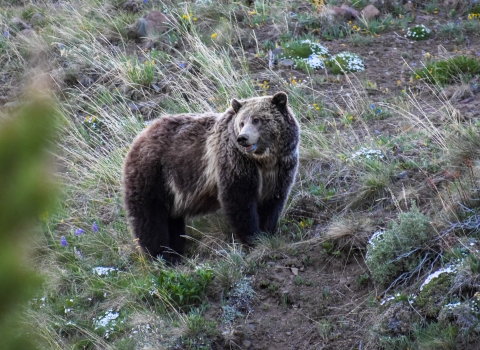The U.S. Fish and Wildlife Service and the National Marine Fisheries Service have finalized a regulatory definition of the term “habitat” that will be used for designating critical habitat under the Endangered Species Act (ESA). The definition is part of the efforts of the Trump Administration to balance effective, science-based conservation with common-sense policy designed to bring the ESA into the 21st century.
“This action will bring greater clarity and consistency to how the Service designates critical habitat,” said Rob Wallace, Assistant Secretary for Fish and Wildlife and Parks. “Making the Endangered Species Act more effective at conserving imperiled wildlife and more transparent and user friendly for stakeholders represents a win-win for everyone.”
“Given that this will improve implementation of the Endangered Species Act and how stakeholders engage with it, we are very happy to announce this final definition of habitat,” said Fish and Wildlife Service Director Aurelia Skipwith. “We look forward to continuing to improve and streamline regulations that support more effective conservation and inspired partnerships.”
The final definition of habitat is, “For the purposes of designating critical habitat only, habitat is the abiotic and biotic setting that currently or periodically contains the resources and conditions necessary to support one or more life processes of a species.”
This definition explicitly limits the term habitat to apply only to critical habitat designations under the ESA, and no previously finalized critical habitat designations will be reevaluated as a result of its establishment. While the definition is broad enough to encompass both occupied and unoccupied critical habitat, following our 2019 revised critical habitat regulations questions about whether an unoccupied area qualifies as habitat are less likely to occur.
More than three years ago, the Department of the Interior and the Department of Commerce began considering improvements to the regulations the federal government uses to implement the ESA to make them more efficient and effective. Last year, the Service finalized regulatory changes to section 4 of the ESA dealing with the listing, delisting and critical habitat, and to section 7 consultation processes. Today’s final definition of habitat will continue to improve implementation of the ESA and will address a 2018 Supreme Court ruling in a case regarding dusky gopher frog critical habitat (Weyerhaeuser Co. v U.S. FWS) that any area designated as critical habitat must also be habitat for the species.
The ESA defines critical habitat and establishes separate criteria depending on whether the area is within or outside the geographical area occupied by the species at the time of listing. It does not define the broader term “habitat,” however, and the Services have not previously defined this term in implementing regulations. Combined with last year’s regulatory reform, these actions will increase the clarity of the ESA, improve partnerships, stimulate more effective conservation on the ground, and improve consistency and predictability around critical habitat determinations.
"The Department's move to define 'habitat' is a win for everyone, especially endangered and threatened species," said Jay Farrell, National Association of State Foresters executive director. "The Endangered Species Act plays a substantial role in how America's forests are protected and managed. Settling on a standard definition for 'habitat' under ESA provides private landowners—and all other land managers—with a clearer understanding of how the law will be implemented and how they can contribute to the conservation of at-risk species."
The final regulations can be found in the Federal Register Reading Room at: https://www.federalregister.gov/public-inspection/current.



